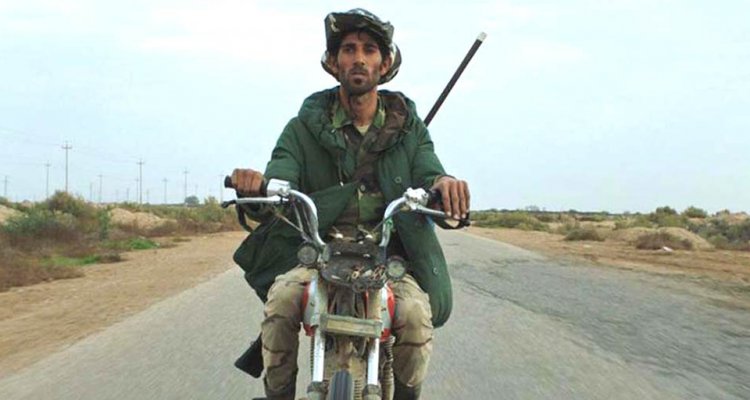Composed of a series of striking tableaux, Gianfranco Rosi’s contemplative documentary, “Notturno,” mines the intergenerational conflict on the borders between Iraq, Kurdistan, Syria, and Lebanon. Cross-cutting between a number of disparate individuals, including the military, political dissidents, and ordinary citizens, Rosi’s film eschews any type of narrative cohesion, instead, presenting a series of unnamed individuals, going about their lives surrounded by the rubble and omnipresent gunfire that still plagues the region. While mileage on such a quietly meditative film may vary, “Notturno” – meaning “nocturne” in Italian – is a visually rich film collage.
READ MORE: 2020 Venice Film Festival Preview: All The Must-See Films To Watch
Forgoing establishing shots, narration, or really even subjects, “Notturno” unfolds through a series of fixed shots, as Rosi follows around various incidents, often cutting between military operations and the normal citizens trying to live their lives with conflict all around them. Think Godfrey Reggio’s films without the booming Phillip Glass score, and the over-abundance of time-lapse. What “Notturno” lacks in progression, it makes up for in beauty. Each shot is a painterly composition, as Rosi – who shot the film over the course of three years – often stages his subjects symmetrically within the frame. While we may move from empty prisons to bedrooms to military outposts, Rosi imposes rigid compositional control on each frame.
READ MORE: Fall Film Preview: 40 Most Anticipated Films To Watch
Ultimately, the film is trance-like, punctuating long gaps of silence (Rosi eschews any type of musical score) with gunfire. When a couple attempts to share a drink on a rooftop, their conversation is often interrupted by the far off sounds of gunfire. “Notturno” is a staggeringly silent film, drowning out background noise until the viewer’s ears are attuned to every small sound. When people do speak, it is usually through artistic mediation. A dissident writes an amateur play about the ongoing conflict, a young Syrian boy attempts to process his trauma through art therapy, patients at a hospital play-act between ISIS and Syrian forces. In fact, despite “Notturno” insistence of distanced observation, we often return to the theater, as amateur actors rehearse and, in the end, perform their show for a small crowd.
However, these quiet moments of endurance are often punctuated with images of military maneuvers and fighting, giving over half the film’s runtime to combat. It’s in these moments, including a number of discrete scenes taking place at a prison, that Rosi’s highly aestheticized compositions are at odds with the subjects on the screen. While he finds beauty in even the most mundane of activities, the implications of that beauty are never truly parsed out.
In the end, the meditative qualities of “Notturno,” in many ways, exist as a tabula rasa for the audience to project their own feelings and emotions about Middle Eastern conflict on. The sum total of “Notturno” is dependent on the viewer’s own interests and perceptions. Rossi has crafted an astonishingly alluring film that lacks a firm point of view, treating each subject (including an ISIS soldier, at one point) with the same detached perspective. Like many of the characters, whose lives we weave in and out of, Rosi’s film exists in fragments, never adding up to a complete whole. [B]
Click here to read more of our coverage from the 2020 edition of the Venice Film Festival.

